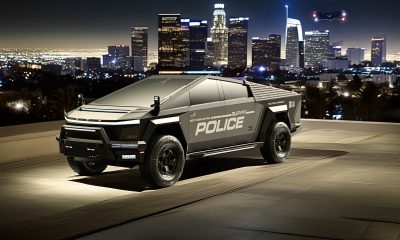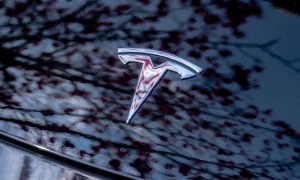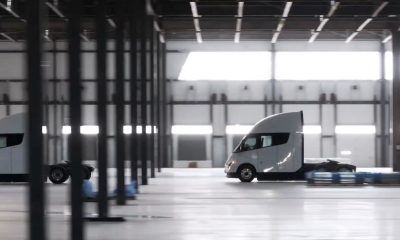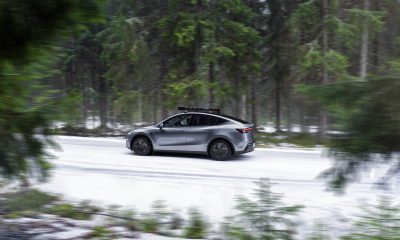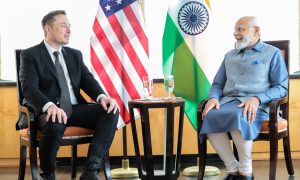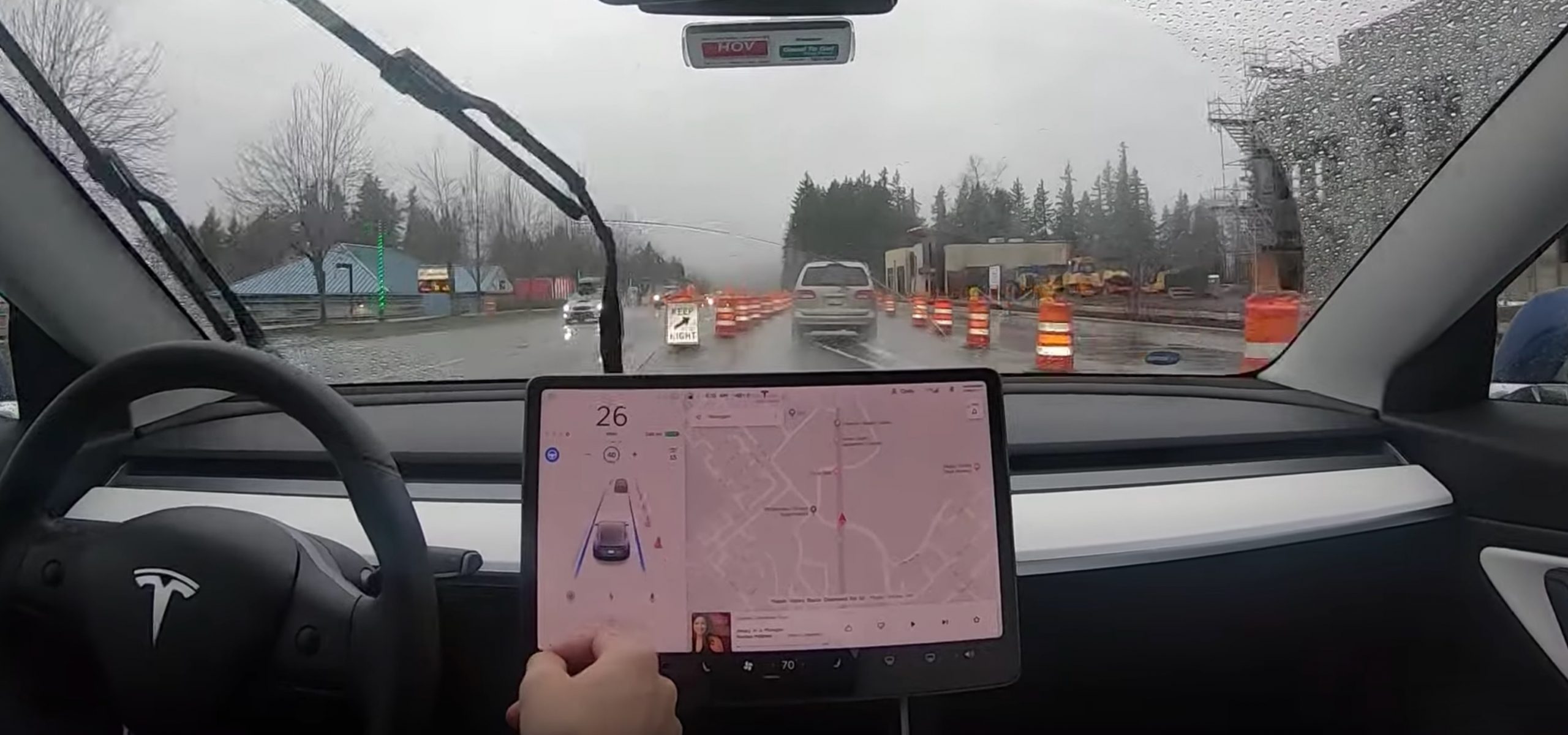

News
Tesla is patenting a clever way to train Autopilot with augmented camera images
Tesla is currently tackling what could only be described as its biggest challenge to date. In his Master Plan, Part Deux, CEO Elon Musk envisioned a fleet of zero-emissions vehicles that are capable of driving on their own. Tesla has made steps towards this goal with improvements and refinements to its Autopilot and Full Self-Driving suites, but a lot of work remains to be done.
As noted by Tesla during its Autonomy Day presentation last year, attaining Full Self-Driving is largely a matter of training the neural networks used by the company. Tesla adopts what could be described as a somewhat organic approach for autonomy, with the company using a system that is centered on cameras and artificial intelligence — the equivalent of a human primarily using the eyes and brain to drive.
Tesla’s camera-centric approach may be quite controversial due to Elon Musk’s strong stance against LiDAR, but it is gaining ground, with other autonomous vehicle companies such as MobilEye developing FSD systems that rely primarily on visual data and a trained neural network. This approach does come with its challenges, as training neural networks requires tons of data. Tesla emphasized this point as much during its Autonomy Day presentation.
With this in mind, it is pertinent for the electric car maker to train its neural networks in a way that is as efficient as possible with zero compromises. To help accomplish this, Tesla seems to be looking into the utilization of augmented data, as described in a recently published patent titled “Systems and Methods for Training Machine Models with Augmented Data.”
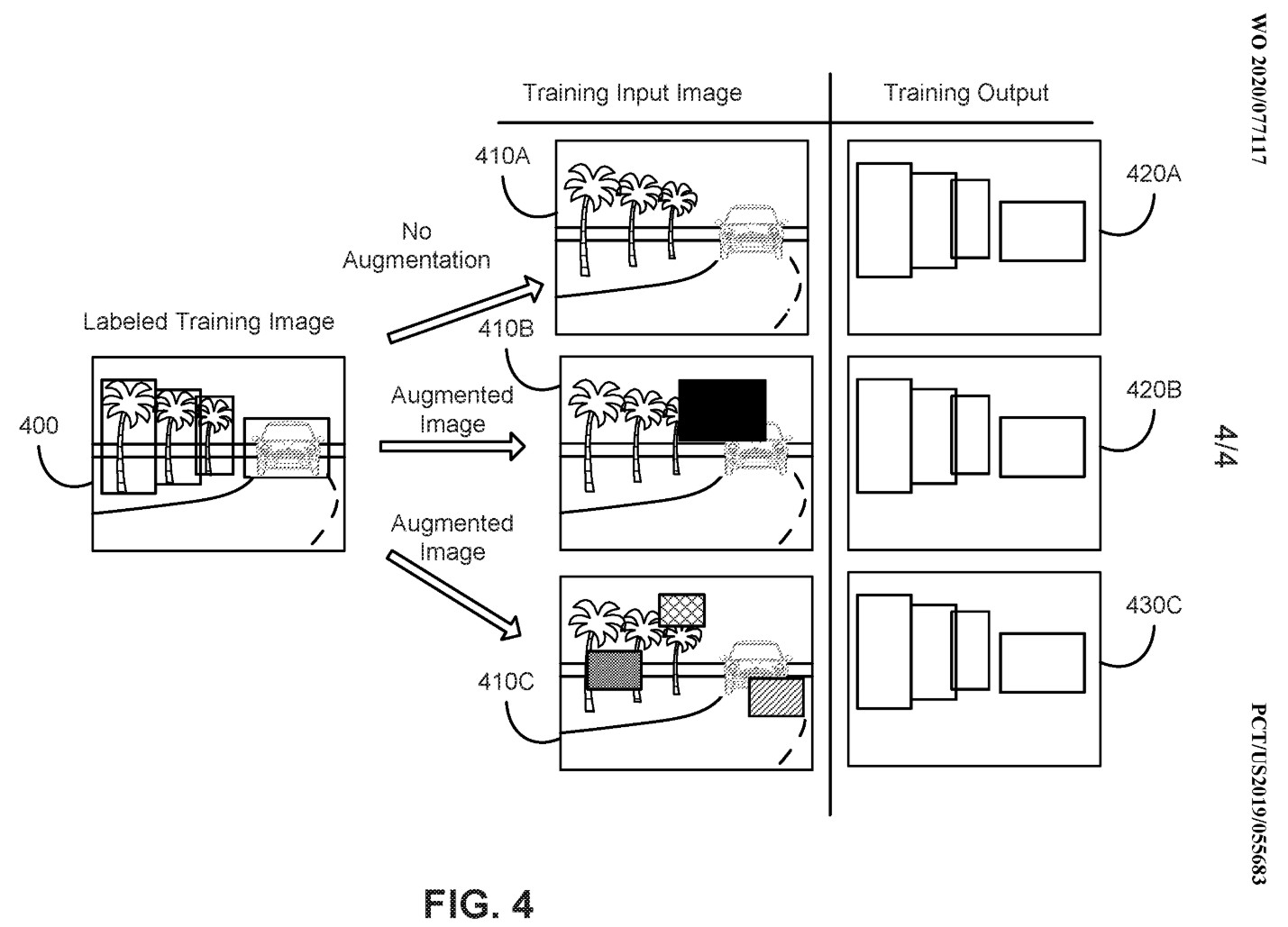
Teslas are equipped with a suite of cameras that provide 360-degree visual coverage for the vehicle. In the patent’s description, Tesla noted that images used for neural network training are usually captured by various sensors, which, at times, have different characteristics. An example of this may lie in a Tesla’s three forward-facing cameras, each of which has a different field of view and range as the other two.
Tesla’s recent patent describes a system that allows the company to process these images in an optimized manner. Part of how this is done is through augmentation, which opens the doors to flexible and widespread neural network training, even when it involves vehicles equipped with differently-specced cameras. The electric car maker describes this process as such:
“Augmentation may provide generalization and greater robustness to the model prediction, particularly when images are clouded, occluded, or otherwise do not provide clear views of the detectable objects. These approaches may be particularly useful for object detection and in autonomous vehicles. This approach may also be beneficial for other situations in which the same camera configurations may be deployed to many devices. Since these devices may have a consistent set of sensors in a consistent orientation, the training data may be collected with a given configuration, a model may be trained with augmented data from the collected training data, and the trained model may be deployed to devices having the same configuration.”
Among the most notable aspects of Tesla’s recent patent is the use of “cutouts,” which allow Tesla’s neural networks to be trained using an optimized set of images. This was something that was discussed by former Tesla Autopilot engineer Eshak Mir in a Third Row Podcast interview, where he hinted at a system adopted in the electric car maker’s ongoing Autopilot rewrite that helped lay out “all the camera images” from a vehicle “into one view.” Such a process has the potential to help Tesla with 3D labeling, especially since the images used for neural network training are stitched together. Tesla’s patent seems to reference a system that is very similar to that described by the former Autopilot engineer.
“As a further example, the images may be augmented with a“cutout” function that removes a portion of the original image. The removed portion of the image may then be replaced with other image content, such as a specified color, blur, noise, or from another image. The number, size, region, and replacement content for cutouts may be varied and may be based on the label of the image (e.g., the region of interest in the image, or a bounding box for an object).”
Tesla is aiming to release a feature-complete version of its Full Self-Driving suite as soon as possible. Elon Musk remains optimistic about this, despite the company missing its initial timeline that was set at the end of 2019. That being said, Elon Musk did mention previously that Tesla is working on a foundational rewrite of Autopilot. In a tweet early last month, Musk stated that an essential part of the rewrite involves work on Autopilot’s core foundation code and 3D labeling. Once done, the CEO indicated that additional functionalities could be rolled out quickly. This recent patent, if any, seems to give a glimpse at how these improvements are being done.
News
SpaceX’s Crew-11 mission targets July 31 launch amid tight ISS schedule
The flight will lift off from Launch Complex 39A at Kennedy Space Center in Florida.
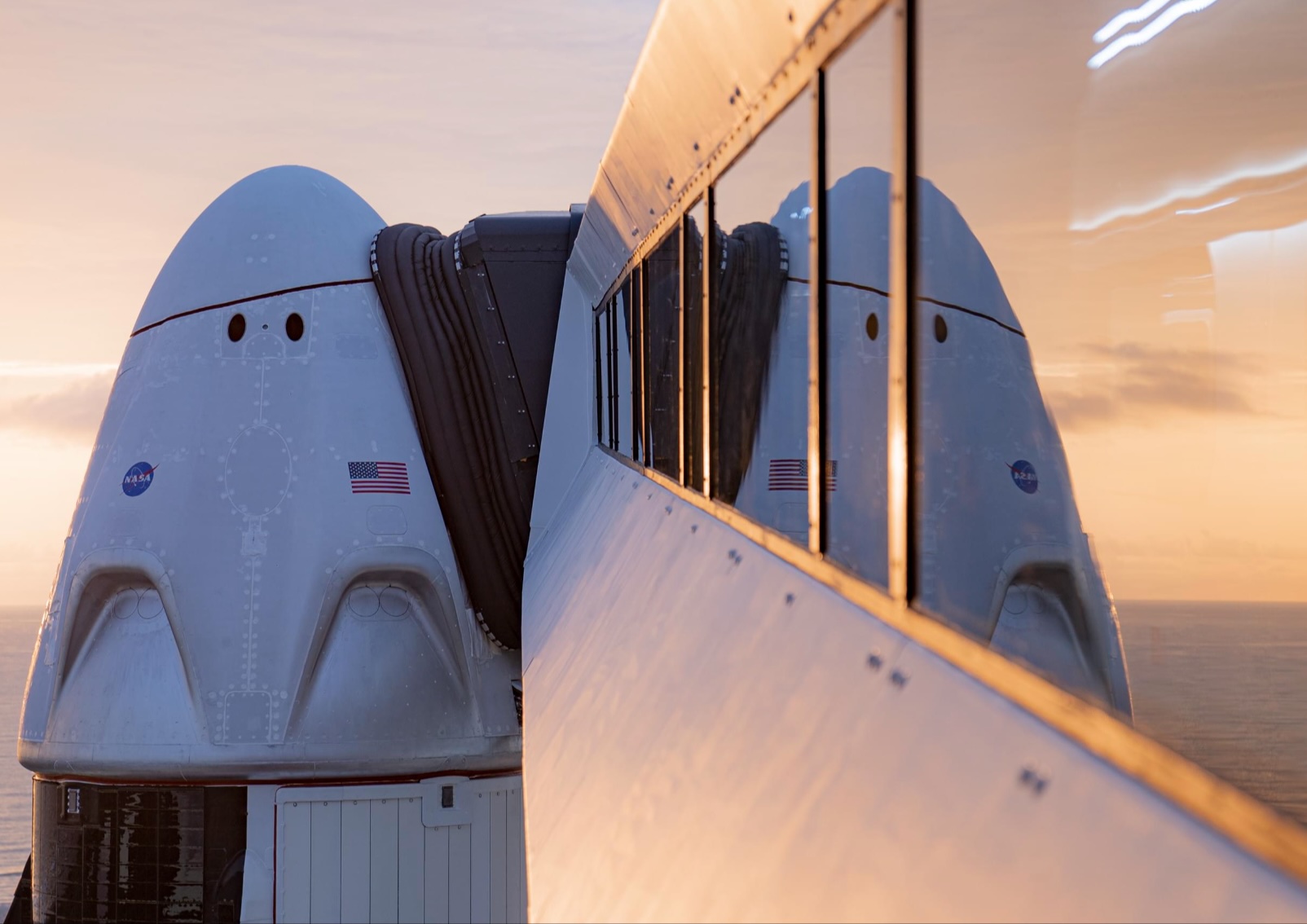
NASA and SpaceX are targeting July 31 for the launch of Crew-11, the next crewed mission to the International Space Station (ISS). The flight will lift off from Launch Complex 39A at Kennedy Space Center in Florida, using the Crew Dragon Endeavour and a Falcon 9 booster.
Crew Dragon Endeavour returns
Crew-11 will be the sixth flight for Endeavour, making it SpaceX’s most experienced crew vehicle to date. According to SpaceX’s director of Dragon mission management, Sarah Walker, Endeavour has already carried 18 astronauts representing eight countries since its first mission with NASA’s Bob Behnken and Doug Hurley in 2020, as noted in an MSN report.
“This Dragon spacecraft has successfully flown 18 crew members representing eight countries to space already, starting with (NASA astronauts) Bob (Behnken) and Doug (Hurley) in 2020, when it returned human spaceflight capabilities to the United States for the first time since the shuttle retired in July of 2011,” Walker said.
For this mission, Endeavour will debut SpaceX’s upgraded drogue 3.1 parachutes, designed to further enhance reentry safety. The parachutes are part of SpaceX’s ongoing improvements to its human-rated spacecraft, and Crew-11 will serve as their first operational test.
The Falcon 9 booster supporting this launch is core B1094, which has launched in two previous Starlink missions, as well as the private Ax-4 mission on June 25, as noted in a Space.com report.
The four-members of Crew-11 are NASA astronauts Zena Cardman and Mike Fincke, as well as Japan’s Kimiya Yui and Russia’s Oleg Platonov.
Tight launch timing
Crew-11 is slated to arrive at the ISS just as NASA coordinates a sequence of missions, including the departure of Crew-10 and the arrival of SpaceX’s CRS-33 mission. NASA’s Bill Spetch emphasized the need for careful planning amid limited launch resources, noting the importance of maintaining station altitude and resupply cadence.
“Providing multiple methods for us to maintain the station altitude is critically important as we continue to operate and get the most use out of our limited launch resources that we do have. We’re really looking forward to demonstrating that capability with (CRS-33) showing up after we get through the Crew-11 and Crew-10 handover,” Spetch stated.
Lifestyle
EV fans urge Tesla to acquire Unplugged Performance for edge in fleet and security industry
Unplugged Performance has built a name for itself by producing performance upgrades for Tesla vehicles.
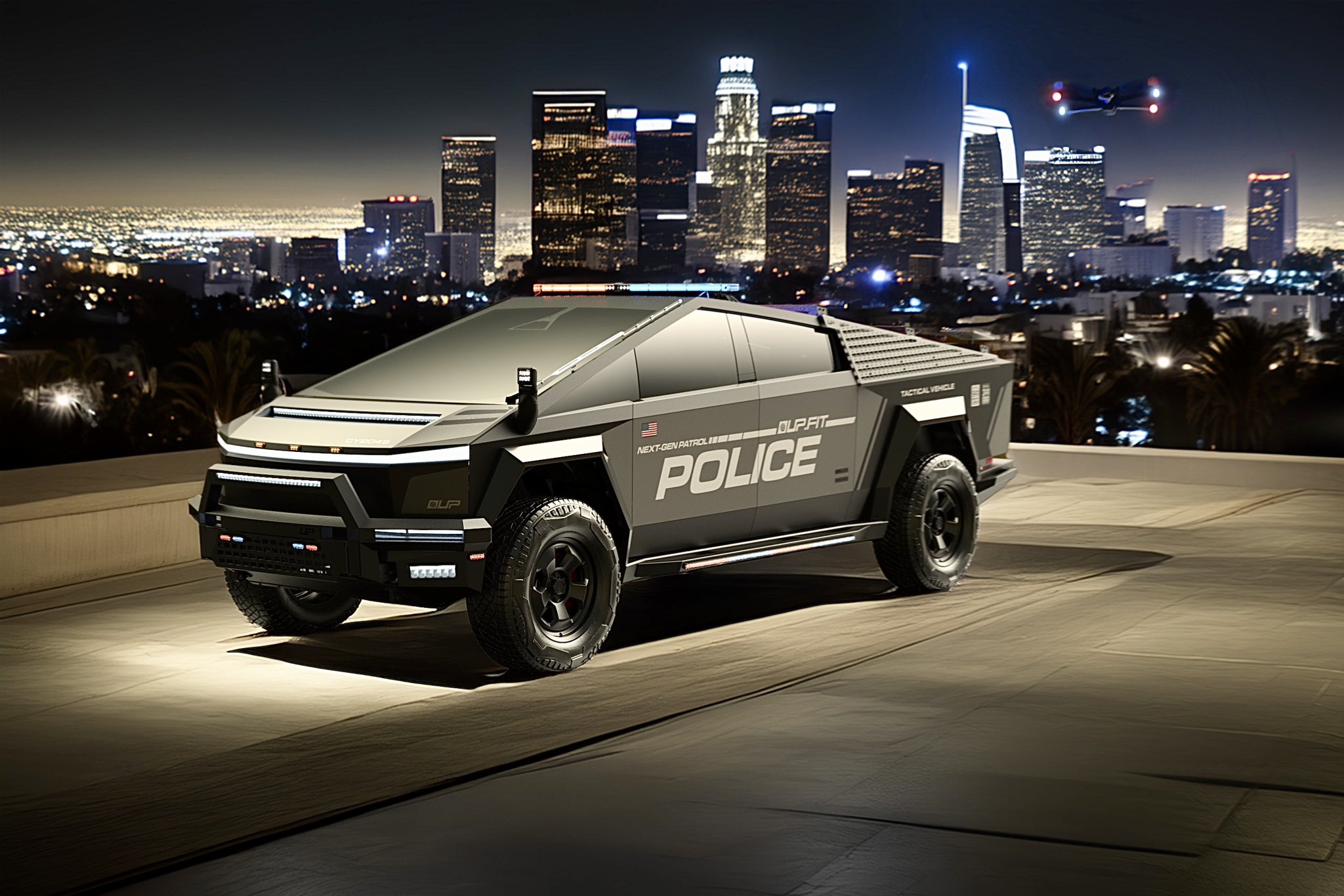
A growing number of Tesla enthusiasts and longtime community voices are calling on the electric vehicle maker to acquire Unplugged Performance, a California-based aftermarket company best known for tuning Tesla vehicles and developing specialized government fleet solutions under its UP.FIT division.
The idea was once considered a niche proposal among EV fans, but it is now gaining serious attention not just as a performance play but as a strategic move to deepen Tesla’s roots in the fleet and security industry.
A strategic fit
Unplugged Performance has built a name for itself by producing performance upgrades for Tesla vehicles, from track-optimized components to visual and aerodynamic upgrades. But in recent years, its UP.FIT division has pivoted toward a more functional future by outfitting Tesla vehicles like Model Ys for police, military, and government use.
That work has sparked growing calls for closer collaboration with Tesla, especially as the EV maker increasingly leans into autonomy, AI, and fleet services as core components of its next chapter.
“I posted this four years ago, but I think it’s more true now than ever,” wrote Whole Mars Catalog, a well-known Tesla investor and FSD Beta tester, on X. “Tesla should buy Unplugged. But not just as a Performance division. What they are doing with UP.FIT unlocks large government and commercial fleet purchases that can improve utilization.”
Tesla fans such as shareholder Sawyer Merritt echoed the sentiment, calling Unplugged a “great fit within Tesla.” adding, “They are literally located directly next to Tesla’s design studio in Hawthorne.”
Enabling the next wave
Supporters of the idea noted that integrating Unplugged into Tesla’s corporate structure could help accelerate the adoption of autonomous technologies in government sectors. With UP.FIT patrol cars already in use across some U.S. police departments, Tesla fans envisioned a future where self-driving Teslas could potentially revolutionize law enforcement, search-and-rescue, and public service logistics.
“Just imagine how autonomous patrol cars could transform policing and bring us into a safer future,” the veteran FSD tester wrote.
The benefits could also extend to Tesla’s existing consumer base. “They also have some incredible products in the works that I think will appeal to many ordinary Tesla drivers — not just those looking for performance or mods. Stuff that’s so good it should have come straight from the design studio next door,” Whole Mars Catalog noted.
Unplugged Performance, founded in 2013, shares not just a product vision with Tesla, but also geography. Its Hawthorne headquarters sits directly adjacent to Tesla’s design studio, and the two companies have maintained a close working relationship over the years. The aftermarket firm has long positioned itself as a “mission-aligned” partner to Tesla.
In response to the recent calls for acquisition, Unplugged Performance acknowledged the support from the community. “Our very existence is to support the Tesla mission with @UpfitTesla and @UnpluggedTesla,” Unplugged CEO Ben Schaffer posted on X. “We love working with Tesla and are grateful for the community’s support since 2013!”
News
Tesla debuts hands-free Grok AI with update 2025.26: What you need to know
All new Tesla vehicles delivered on or after July 12, 2025, will include Grok AI out of the box
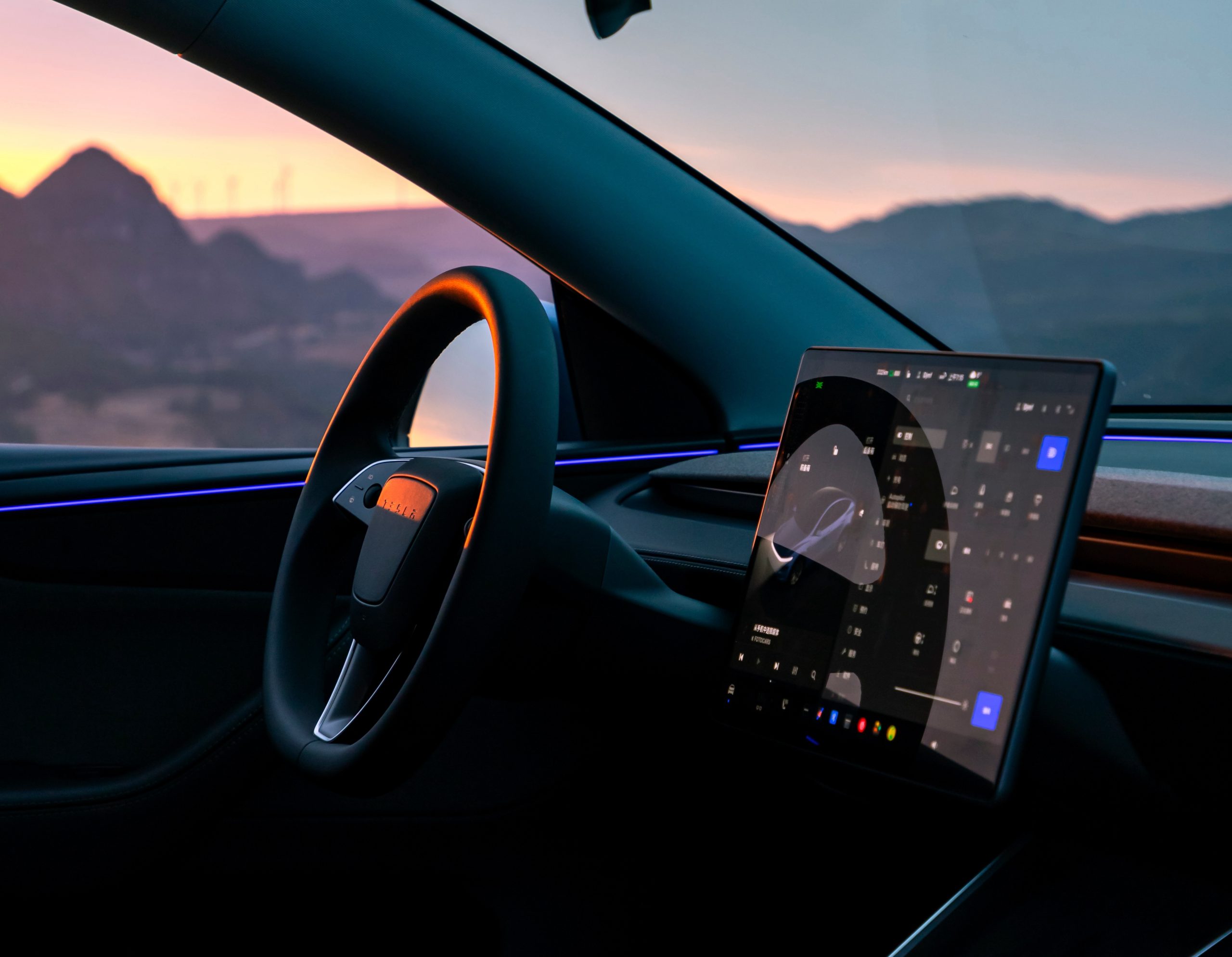
Tesla has begun rolling out Grok, an in-car conversational AI assistant developed by xAI, to eligible vehicles starting July 12. The feature marks the most direct integration yet between Elon Musk’s artificial intelligence startup and Tesla’s consumer product lineup, offering drivers hands-free access to a chat-style companion while on the road.
Grok comes pre-installed on new vehicles
According to Tesla’s FAQ page for the feature, all new vehicles delivered on or after July 12, 2025, will include Grok AI out of the box. Owners of older vehicles may gain access through an over-the-air update, provided their vehicle meets a few hardware and software requirements.
Specifically, Grok is currently only supported on Tesla models equipped with an AMD infotainment processor and running vehicle software version 2025.26 and higher. Compatible models include the Model S, Model 3, Model X, Model Y, and Cybertruck. A Premium Connectivity subscription or active Wi-Fi connection is also required.
Tesla notes that additional vehicle compatibility may arrive in future software updates.
Grok’s features and limitations for now
Drivers can engage with Grok using the App Launcher or by pressing and holding the voice command button on the steering wheel. Grok is designed to answer questions and hold conversations using natural language, offering responses tailored to its chosen personality—ranging from “Storyteller” to the more eccentric “Unhinged.”
For fun, Tesla posted a demonstration of Grok likely running on “Unhinged” talking about what it would do to Optimus when they are on a date, much to the shock of the humanoid robot’s official social media account.
It should be noted, however, that Grok cannot currently issue commands to the vehicle itself, at least for now. Traditional voice commands for tasks like climate control, navigation, or media remain separate from Grok as of writing.
The feature is being released in Beta and does not require a Grok account or xAI subscription to activate, although that policy may change over time.
Grok privacy and in-car experience
Tesla emphasizes that interactions with Grok are securely processed by xAI and not linked to a user’s Tesla account or vehicle. Conversations remain anonymous unless a user signs into Grok separately to sync their history across devices.
Tesla has also begun promoting Grok directly on its official vehicle webpages, showcasing the feature as part of its in-car experience, further highlighting the company’s increasing focus on AI and infotainment features on its all-electric vehicles.
-

 Elon Musk2 weeks ago
Elon Musk2 weeks agoTesla investors will be shocked by Jim Cramer’s latest assessment
-

 Elon Musk3 days ago
Elon Musk3 days agoxAI launches Grok 4 with new $300/month SuperGrok Heavy subscription
-

 Elon Musk5 days ago
Elon Musk5 days agoElon Musk confirms Grok 4 launch on July 9 with livestream event
-

 News1 week ago
News1 week agoTesla Model 3 ranks as the safest new car in Europe for 2025, per Euro NCAP tests
-

 Elon Musk1 week ago
Elon Musk1 week agoxAI’s Memphis data center receives air permit despite community criticism
-

 News2 weeks ago
News2 weeks agoXiaomi CEO congratulates Tesla on first FSD delivery: “We have to continue learning!”
-

 Elon Musk2 weeks ago
Elon Musk2 weeks agoTesla scrambles after Musk sidekick exit, CEO takes over sales
-

 News2 weeks ago
News2 weeks agoTesla sees explosive sales growth in UK, Spain, and Netherlands in June


